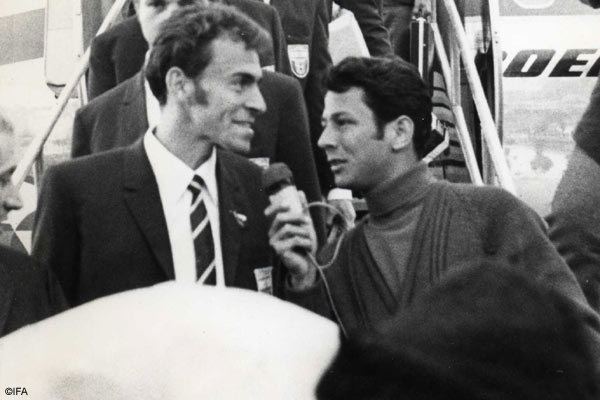Population 185,001 (2010) University Netanya Academic College Area 28,455 dunams | District Founded February 18, 1929 Mayor Miriam Feirberg Ikar | |
Netanya (Hebrew: ?????????, lit., "gift of God") is a city in the Northern Central District of Israel, and is the capital of the surrounding Sharon plain. It is located 30 km (18.64 mi) north of Tel Aviv, and 56 km (34.80 mi) south of Haifa, between the Poleg stream and Wingate Institute in the south and the Avichail stream in the north. Netanya was named in honor of Nathan Straus, a prominent Jewish American merchant and philanthropist in the early twentieth century.
Contents
Map of Netanya
Its 14 kilometres (8.7 mi) of beaches have made the city a very popular tourist resort. In addition, the city is known for its large immigrant population. A significant percentage of the citys population consists of immigrants from the former Soviet Union, France, and Ethiopia, and the city is home to a notably large population of Anglo speaking immigrants from the United Kingdom, United States, Canada, South Africa, Australia and New Zealand.
According to the Israel Central Bureau of Statistics (CBS), at the end of 2009 the city had a total population of 183,200. An additional 150,000 people live in the local and regional councils within 10 kilometres (6 miles) of Netanya which serves as a regional center for them. The city mayor is Miriam Feirberg. The city is expected to reach a population of 350,000 by 2020.
Netanya, israel sea, sun & fun
History
The idea to create the settlement of Netanya was drawn up at a meeting of the Bnei Binyamin association in Zikhron Yaakov. The location was decided upon near the ancient site of Poleg and it was decided to name it in honor of Nathan (Hebrew: Natan) Straus (1848–1931), co-owner of Macy’s department store, New York City Parks Commissioner, and president of the New York City Board of Health, who gifted two-thirds of his personal fortune to projects benefiting Jews and Arabs in Palestine. "Netanya...was named for Straus in the hope he would donate money to them. When he told them he had no more money to give they were disappointed, but decided to keep the citys name anyway." In 1928 members of Bnei Binyamin and Hanote, an organisation set up after Straus was informed of the establishment of the settlement, are said to have purchased 350 acres (1.4 km2) of Umm Khaled lands. There remains today, however, considerable controversy among Palestinian and Israeli interpretation about whether land was sold (primarily from non-resident Arab land holders) during the British Mandate.

On December 14, 1928 a team led by Moshe Shaked began digging for water at the site, finding it in February 1929. Subsequently, on February 18, 1929, the first five settlers moved onto the land, plowing and cultivating it for the first time. In the weeks that followed, more settlers began arriving. The land was divided between the settlers in June 1929 as slowly the vision of the settlement became reality. Development was set back, however when the 1929 Palestine riots and massacre caused the settlement to be abandoned for a couple of weeks. By September, however, development was back on track with the cornerstones for the first 10 houses being laid on Sukkot.
In the following years, Netanya continued to grow, with the first kindergarten and shop opening in 1930, and the first school in 1931, by which time there were 100 settlers. In 1933, the British architect Cliff Holliday proposed a plan for Netanya to become a tourist city. Holliday also prepared urban projects in Jaffa, Tiberias, Lydda and Ramla. The first urban plan for the city, saw it being divided into three sections with a tourism district along the coastline, housing, farms and commerce in the center, and agriculture and industry to the east. 1933 also saw the completion of the Tel-Aviv Hotel, the first hotel in the city, as well as the establishment of two new neighborhoods, Ben Zion and Geva.
The moshava as it then was continued to grow in 1934, when the first ship of illegal immigrants carried 350 to Netanyas shoreline. These operations continued until 1939, with over seventeen ships landing near the city, being aided by the residents of Netanya. Whilst flourishing agriculturally, 1934 also saw the city diversify with Primazon opening the first factory there, producing fruit and vegetable preserves. Following this, the first industrial zone was set up, whilst the Shone Halahot Synagogue was built and the Bialik School, the first school, inaugurated.
As the settlement continued to grow, 1937 saw the cornerstone was laid for a new commercial center, the establishment of the Ein HaTchelet neighborhood, and the connection of Netanya to the Tel Aviv to Haifa road. In 1940, the British Mandate government defined Netanya as a local council of which Oved Ben-Ami was elected head of. Expansion continued after this point, with the settlement of Neve Itamar created near Netanya in 1944, later becoming a neighborhood, and the first high school opening in 1945.
Economy
Industry in Netanya is largely divided between four industrial parks. In the south of the city, the newest of these houses the first branch of IKEA in Israel as well as much hi-tech industry which includes jobs in herzlia. Tourism also plays a fairly major part in Netanyas economy with some 19 hotels in the city having 1,452 rooms. On average, this creates some 589 jobs. The hotels had an average occupancy rate of 51.7% in 2006. Netanyas long seashore and many beaches have created a holiday industry, which in turn features resort hotels, restaurants, and malls.
Geography

Netanya is located on the Israeli Mediterranean Coastal Plain, the historic land bridge between Europe, Africa, and Asia. The city is the capital of the Sharon plain, a geographic region stretching from the Mediterranean in the west to the Samarian hills in the east, and the modern day Tel Aviv metropolitan area in the south northwards to Mount Carmel. Although capital of a densely populated region, Netanya itself is relatively separate from settlements to the north, south, and east, though over time, growth has incorporated some into what makes up modern day Netanya.
Apart from some small moshavim and kibbutzim, south of Netanya is relatively clear of settlement until Herzliya and the start of the Gush Dan, Tel Aviv Metropolitan Area. Likewise, to the north is clear of large settlement until Hadera, and the east until Tulkarm in the West Bank. The area to the east of Netanya does, however, have a large concentration of kibbutzim and moshavim in the Hefer Valley Regional Council and local councils of Kfar Yona and Even Yehuda.
Netanya itself is divided into a large number of neighborhoods (see Neighborhoods of Netanya), recently growing southwards out of the city to create a number of high-end coastal neighborhoods with industrial areas inland. Netanya is home to the Poleg nature reserve and the Irises Dora Rainpool nature park containing the worlds largest population of iris atropurpurea. At the center of the park is a rainpool which fills up with water in the winter months, and dries up over the summer months. Signs along the rainpool include information on the types of flora and fauna which populate the ecosystem.
Culture
As a tourist destination and large city, Netanya features a number of museums and galleries. The Well House is a museum telling the early history of Netanya located in a farm established in 1928, and as such one of the earliest buildings in Netanya. Also in the city are the Tribes of Israel Pearl museum of Yemenite Jewish Heritage, the Shlomo Dror Art Institute, and the Diamimon diamond museum. Furthermore, the Cliff Gallery, Gosher Gallery, Abecassis Gallery and Fourth Gallery are all located in the city.

Netanya is also home to many war memorials such as the Holocaust Train Car, Beit Yad Lebanim – the memorial to fallen IDF soldiers from Netanya, the National Memorial for Fallen Ordnance Corps, the Alexandroni Brigade Memorial, the National Victory Monument – dedicated to the Russian Red Army victory over Nazi Germany and the Memorial to Victims of Acts of Terror.
